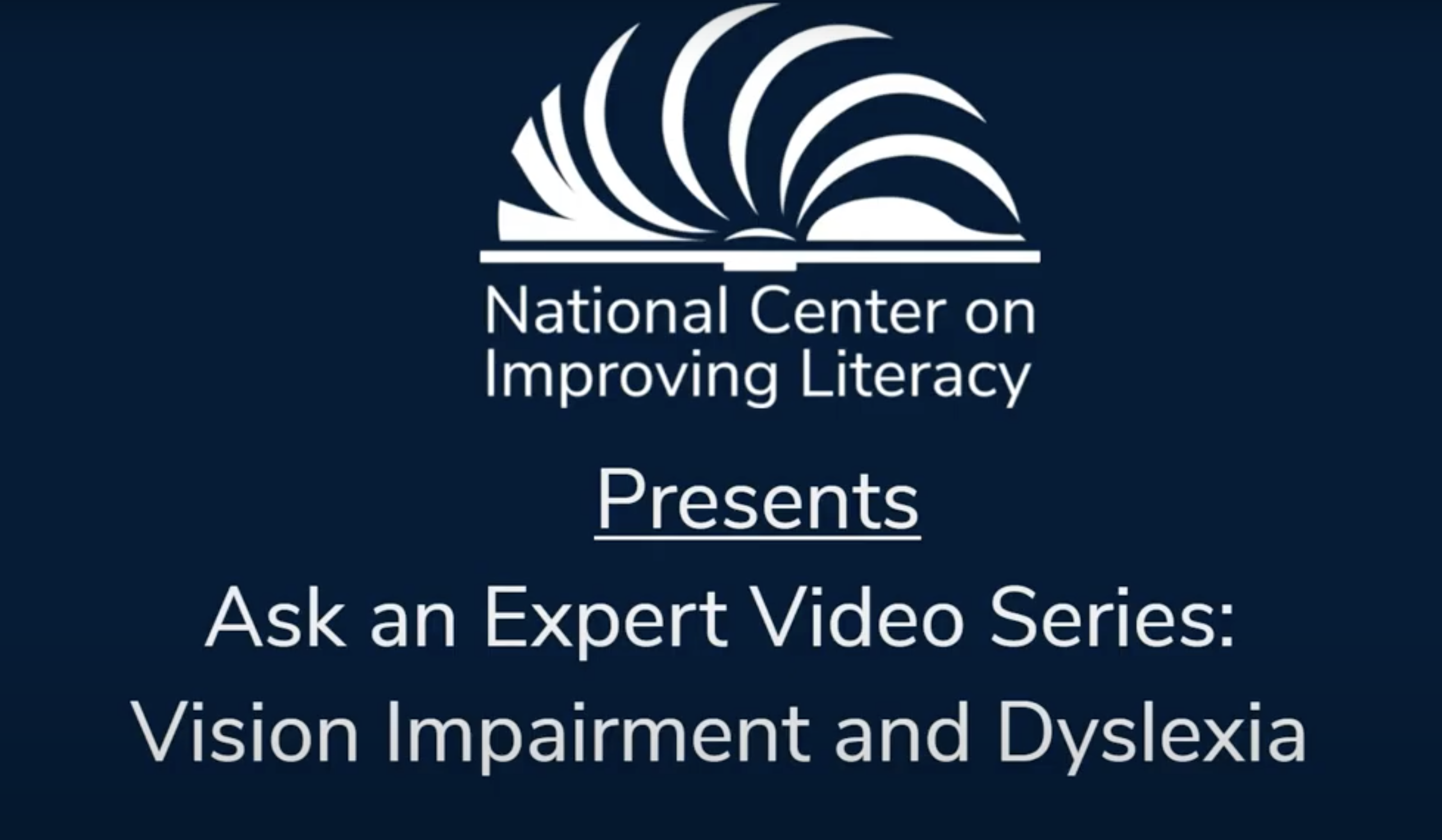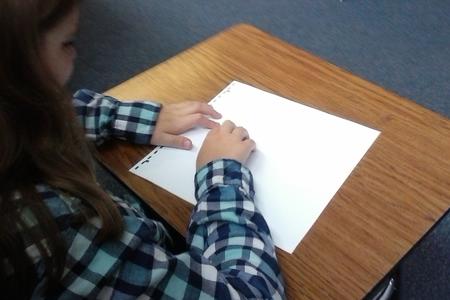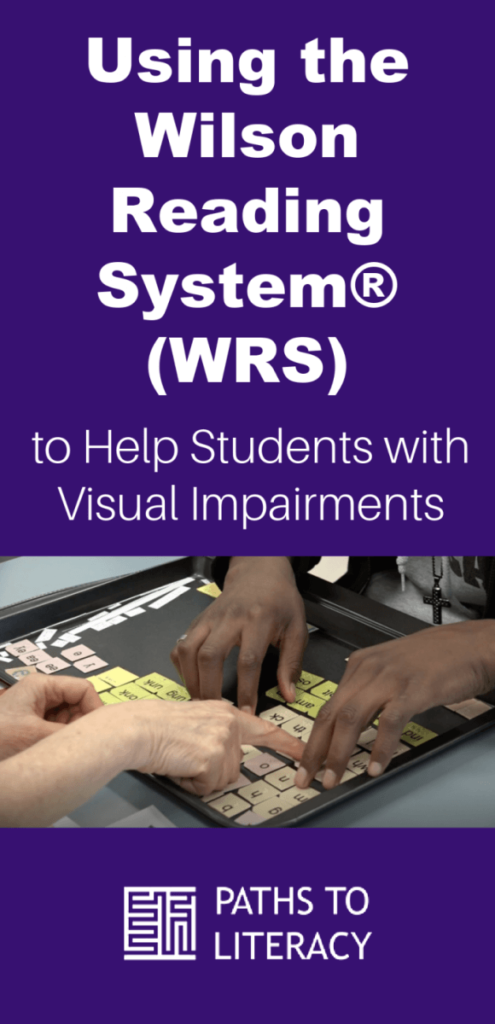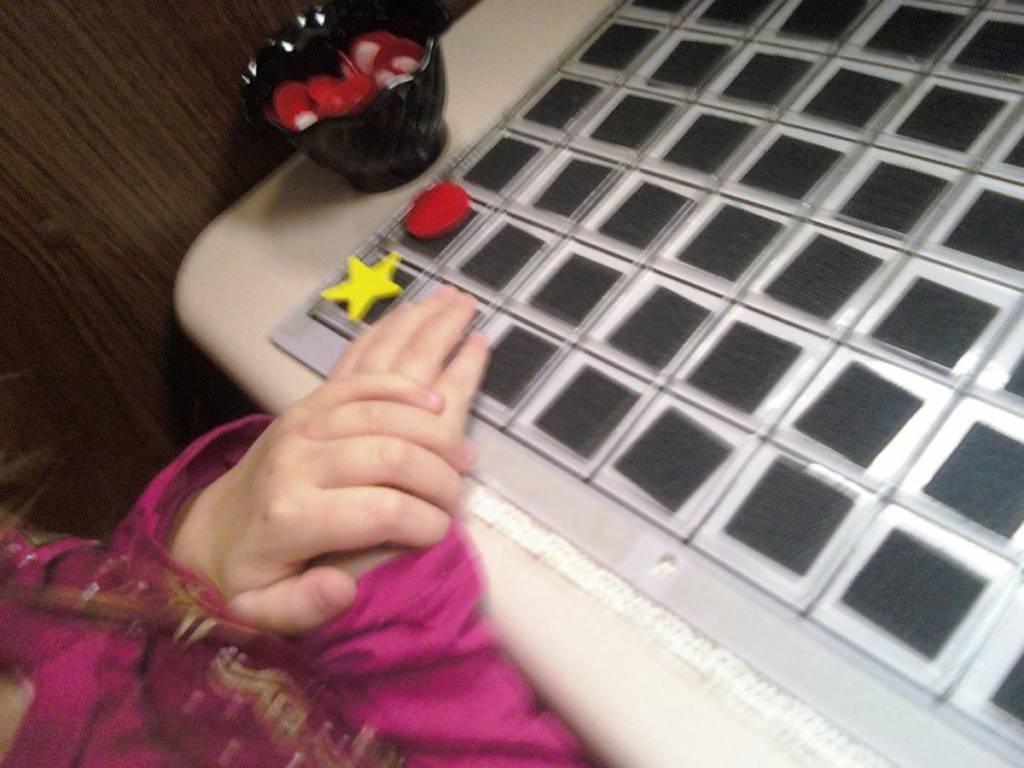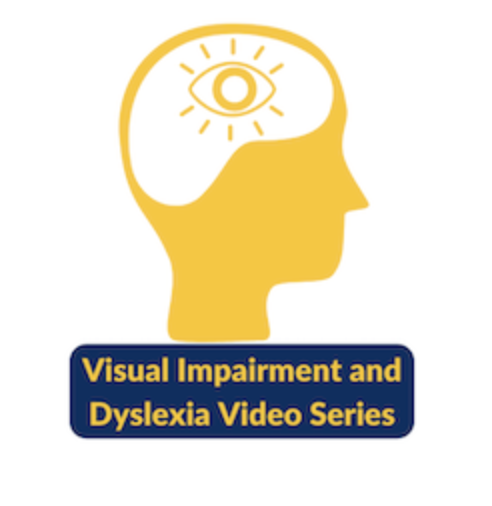
Marnee Loftin, a retired psychologist from the Texas School for the Blind and Visually Impaired, answers questions about visual impairment and dyslexia.
- Is Dyslexia present as well as identified in students with visual impairments?
- What are some of the factors that impact the development of educational skills, particularly in reading?
- What are the similarities and differences in the process of learning to read?
- What are some of the factors that might indicate a need for additional evaluation for dyslexia?
- How would someone evaluate for the presence of dyslexia in students with visual impairment? Wouldn’t the visual impairment make this impossible?
- What types of intervention strategies have proven to be helpful?
Is dyslexia present as well as identified in students with visual impairments?
There have been many debates over the years relating to the possibility that individuals might have a visual impairment as well as dyslexia. Much of this discussion has focused on the impossibility of determining that factors other than vision are contributing to the difficulties in developing fluent reading skills. Experience in the education of students with visual impairment suggests that such a stance is an oversimplification of a complex process. Multiple evaluations and observations of these students suggest that dyslexia can and does occur as a coexisting condition in these students.
The presence of dyslexia is not supported by strong evidence-based research with students who are visually impaired. This is the result of several reasons, generally related to the small numbers and complexity of students identified as “visually impaired.” Representing less than .5% of the population in special education programs throughout the nation, these small numbers present several different variables that contribute to the complexity. These variables include differences in etiology that can be neurological or ocular. Age of onset of the visual impairment as well as degree and type of vision loss is another significant variable. Most discussions focus on a single variable, reading medium. This focus is divided into braille readers and large print readers. However, even this is an oversimplification. Most students who are visually impaired will use multiple media, such as a variety of magnification devices, auditory materials, etc., for different tasks. Students will often change media as they progress through the grades and demands become different. The students who use only braille are few but are often at the center of discussion regarding the possibility of dyslexia as a coexisting condition.
All information suggests that dyslexia is underestimated in the population of persons with visual impairment. Current estimates indicate that 5-15% of the US has a form of dyslexia. In the school age population, 14% of all students are served in special education programs. Specific learning disability (SLD) in reading represents 80% of the eligibilities for special education. A review of the etiologies of students with VI indicate a substantial number have a neurological base which contributes to the risk of dyslexia. All these data suggest that considerable number of students with VI would also demonstrate a type of disability in reading. Anecdotal data as well as reports of experienced teachers of the visually impaired (TVI) suggest this to be true. Yet few students with VI are ever formally evaluated for dyslexia or identified with this or a SLD. In general, evaluators are hesitant to complete such evaluations. There are likely several reasons for this hesitancy. Evaluators are often hesitant because they lack:
- Knowledge of population with VI including reading media and impact of vision loss on learning
- Knowledge of development of reading skills in students who use braille as well as those who use adaptive devices
- Clarity about criteria for dyslexia as well as specific learning disabilities
- Information about evaluation instruments available for use with the visually impaired
- Information about a specific evaluation process that accommodates the needs of the student with a visual impairment
Our goal for improving the accuracy of identification and intervention is to provide information and support to relieve some of these hesitancies. Greater expertise will improve the quality of education for students with visual impairment through development of an appropriate educational plan, sensitive to both strengths and needs.
What are some of the factors that impact the development of educational skills, particularly in reading?
There are many answers to this question. Much will depend upon the degree of vision loss, the age at which it occurred, and the interventions that have been provided. Children with VI run the gamut of cognitive abilities from profound-severe disabilities to gifted. Generalizations are always difficult, but certain patterns emerge. These students tend to have greater difficulty with abstract reasoning as well as social judgment which often effects comprehension in later academic tasks. Most have well-developed memory skills, particularly in short-term memory which is an advantage in early reading tasks. New concepts must be learned through direct experiences rather than simply talking about the concept. It is important that these concepts include the relevant context as well as multiple details. A rich base of conceptual development contributes to large vocabularies and increased comprehension. Without this conceptual understanding, young children often display echolalia, where they echo words and phrases.
Echolalia is often noted in the language of younger children. They tend to echo words and phrases without knowledge of what they are saying or asking. Often abilities are overestimated because of large vocabularies. It is always important to determine the understanding of the words that are used. As words and concepts become more abstract, students with VI typically fall behind their peers in both vocabulary and comprehension.
The major impact upon the development of reading skills is the need for these students to learn disability-specific skills in addition to the tasks typically associated with learning to read. For example, Braille readers are learning a new code that involves good memory and abstract reasoning. Similarly, students with low vision are mastering a variety of adaptive devices that will allow them to read the text. Both groups will be learning ways to position materials, adjust lighting, etc. in ways that will allow them to recognize words efficiently. Each of these will place an additional demand upon learning to read for these students. It is important that all evaluators and teachers be aware of these additional demands when trying to determine the efficiency of the learning process.
Despite all the skills that students with VI learn, there will also be other issues that will impact performance in reading. Some of these include the problems associated with eye fatigue, lack of readily available equipment, resistance to using adaptive devices, etc. Any evaluator working with a student with VI will need to understand the many issues that affect performance during evaluations and instruction. It is important that accommodations be made to minimize the impact of these issues, and that evaluators interpret data correctly.
What are the similarities and differences in the process of learning to read?
The actual process of learning to read is remarkably similar for sighted students and both braille and low vision students. The process begins with early experiences listening to stories and rhymes, observing letters and words in their world, and exploring reading materials. As they develop increasing interest in reading the materials, phonemic awareness emerges resulting in understanding the alphabet and phonics. Once these basic skills are mastered the student with VI also builds reading fluency while increasing vocabulary and improving comprehension.
The similarity between these processes for the different groups of students is also highlighted in brain imaging studies. Research indicates that the areas of the brain used by proficient readers is the same for both students with vision and those who are braille readers. This is true even for braille readers who have never had vision. The only difference is that braille readers show activation in the brain typically associated with tactile perception. All these data suggest that neurologically and developmentally the tasks for sighted students and students with visual impairment are identical in many stages.
When individual phases of development of reading skills are examined, there are some differences between sighted students and students with visual impairment. In early phases of learning to read, there are few differences between proficient print and braille readers. Braille students master phonemic analysis at the same rate as sighted students with some minor differences in their ability to blend word syllables as well as to identify ending sounds. It is suggested that this may be related to their inability to see the speaker’s mouth.
The consistency between sighted and students with VI in their development of phonemic awareness and phonics suggest that problems that emerge for some students with VI are not the result of the vision. Instead these problems reflect the same issues seen in students with vision who are identified as dyslexic.
As with the students with vision, all data indicate that struggling readers in the initial stages of learning to read are likely to remain struggling readers throughout their life. Early intervention by a skilled reading specialist is a critical factor in improving these skills. Seldom does this occur for students with VI.
There are more differences that emerge between students with vision and students with VI as they move forward in the development of reading skills. Fluency is a major difference that is present in almost all students with VI. Both print and braille readers have significantly slower reading rates than their peers. Students with low vision have several issues associated with visual perception such as confusing individual letters that slow down their reading rates and misreading words because of lack of clarity. Students who are braille readers are slowed by the need to use their hands and tactile perception which is inherently slower than visual perception. Additionally braille relies more upon memory and using contextual skills because of multiple meanings of the same letters or contractions. All of these contribute to overall slowing of the pace of reading. As students with VI progress through the grades, they typically begin to supplement their reading with a variety of auditory materials. Otherwise the slower reading rates present significant challenges in reading the substantial amounts of material required in high school and college.
Vocabulary development rate also begins to show a decrease. Braille readers remain on level with their sighted peers through the second grade. After that time there are significant differences between the groups. Students with VI are often very literal in their definitions, and have difficulty understanding figurative speech as well as generalization. There is also some evidence to suggest that students with VI often are not interested in leisure reading and miss an opportunity to expand their vocabular in this way.
What are some of the factors that might indicate a need for additional evaluation for dyslexia?
Data regarding the development of reading skills for students with VI indicate that the patterns are remarkably like those of sighted children. Particularly at initial stages of phonemic awareness, development of phonetic skills and basic decoding skills, the student with VI should acquire skills at the same rate as sighted peers. This is noted for both braille as well as print readers. Experience suggests that students who exhibit the following behaviors should receive additional screening:
- Lacks understanding of sounds and syllables
- Unable to decode familiar words using phonics or patterns
- Has difficulty with rhyming words
- Shows little interest in attempting to read
Many students with VI will master the basic ability to decode basic primer words. However, these students will exhibit behaviors that interfere with fluency and comprehension. Often the ability to read simple words is simply based upon memory rather than any specific decoding abilities. Students who exhibit the following behaviors should be considered for additional evaluation:
- Reading is slow and labored with multiple starts and stops
- Words are omitted or additional sounds and words are added
- Words and passages are read without any concern over meaning simply to complete task of reading
- Reading the words takes maximum effort with decreased comprehension of meaning
Students who are struggling with the process of reading frequently begin to develop behaviors that are associated with task avoidance. These behaviors should be reviewed as possible indicators of a specific learning disability rather than as simply non-compliance. Students who exhibit the following behaviors should be considered for additional evaluation:
- Hesitancy in reading aloud
- Dislikes and is resistant to reading in all settings
- Easily frustrated by reading
- Engages in off-task and/or disruptive behavior during reading activities
How would someone evaluate for the presence of dyslexia in students with visual impairment? Wouldn’t the visual impairment make this impossible?
It is important to remember that dyslexia is not a visual processing disorder. In the past this was a hypothesized cause of the difficulties. However, it is now considered a neurological disorder. As we have discussed earlier, the expectation should be that reading skills will develop for students with VI as they do for students with vision. This is particularly true with early learning such as phonemic awareness and phonetic skills necessary for decoding. Difficulties with these areas should be evaluated and interventions planned. There will be some difficulties with reading that are associated with the vision. Primarily these will be in fluency and comprehension. Other specific skills such as scanning etc. may be related to the specific visual impairment. The teacher of the visually impaired (TVI) will be an excellent resource in explaining these issues as well as describing the behaviors of concern. Based upon these data, it will be possible to plan a complete evaluation for the presence of dyslexia.
Evaluation of any student with a visual impairment should involve a collaborative model, with the TVI providing information about the functional vision of the student to the evaluator. By discussing the needs associated with the vision and the questions to be answered, the evaluator can choose the most appropriate instruments. The evaluator should have specific experience in evaluating for the presence of dyslexia as well as the willingness to participate in a collaborative model. This ensures that the best possible evaluation will provide information about the issues that are affecting the development of fluent reading skills.
The specific instruments used in the evaluation will vary based upon the age and vision of the individual student. Examples of data sources might include a review of records, observation in multiple settings, informal checklists, criterion-referenced instruments, norm-referenced instruments, and evaluations from other specialists like Speech Language Pathologists or Occupational Therapists.
Identifying instruments available in braille or large print is often challenging. American Foundation for the Blind and American Printing House for the Blind are significant resources in locating a variety of helpful publications such as books and evaluation instruments. Often there is a tendency to transcribe instruments into braille and administer such accommodated versions. This is not recommended. One of the major reasons is that the scope and sequence of instruction in braille is different from print. In this context it is impossible to determine the exact reason for the missed item. False conclusions can occur because of this.
What types of intervention strategies have proven to be helpful?
Many TVIs have developed creative programs with high-interest materials. These materials are designed to help the student with VI in learning new skills. Paths to Literacy provides many articles related to this topic with suggestions for specific materials. Even social media sites have interest groups with creative ways to build literacy skills.
Multiple programs are available that are designed to provide interventions for students with VI and difficulties with reading. Both American Foundation for the Blind (AFB) and American Printing House for the Blind have structured programs to provide this training to students with VI. This information is available on the respective websites.
Many schools throughout the US focus upon using Response to Intervention (RTI) models for providing interventions. Kamei-Hannan, Holbrook, and Ricci (2012) present a modified version of the RTI model to be used with students with VI. Tier 1 consists of instruction in reading and writing in the general education classroom. Services are provided by the TVI either in that setting or in a resource room. If inadequate progress is noted, Tier 2 consists of instruction designed to address specific areas of concern. Instruction is provided by the TVI with supplemental instruction by a reading specialist, occupational therapist, or low vision specialist. Lack of significant progress would result in movement to Tier 3 with additional services of other professionals, as well as possible evaluation for special education.
References
Emerson, R.W., Holbrook, M.C, & D’Andrea, F.M. (2009). Acquisition of literacy skills by young children who are blind. Results from the ABC Braille Study. Journal of Visual Impairment & Blindness, 103, 610-624.
Erin, J.N. & Koenig, A.J. (1997). The student with visual disability and a learning disability. Journal of Learning Disabilities, 30 (3), 309-320.
Fraiberg, S. (1977). Insights from the blind: Comparative studies of blind and sighted infants. New York: New American Library.
Handler, S.M. &Frierson, W.M. (2011). Learning disabilities, dyslexia, and vision. Pediatrics, 127, e818-e856.
Kamei-Hannan, C., Holbrook, M.C. & Ricci, L.A. (2012). Applying a response-to-intervention model to literacy instruction for students who are blind or have low vision. Journal of Visual Impairment & Blindness, 106 (2). 69-80
Kamei-Hannan, C. & Ricci, L.A. (2015). Reading Connections: Strategies for teaching students with visual impairment. New York: American Foundation for the Blind.
Jones, B.A. , Smith, H.H., Hensley-Maloney, L., Gansle, K.A. Applying response to intervention to identify learning disabilities in students with visual impairments. Intervention in School and Clinic, 51 (1). 28-36.
Layton, C. & Lock, R. (2001). Determining learning disabilities in children with low vision. Journal of Visual Impairment and Blindness, 5, 288-299.
Loftin, M. (2005). Making evaluation meaningful. Austin, TX, Texas School for the Blind and Visually Impaired. (Revision in press)
Loftin, M. (2018). Getting started with a struggling reader and visual impairment. Paths to Literacy.
Loftin, M. (2015). Determining the Presence of a Learning Disability: The Evaluation. Paths to Literacy.
Loftin, M. (2012). Indicators for possible learning disabilities. Paths to Literacy.
McCarthy, M. (2015). Implementing the Wilson Reading System with Braille Students. Paths to Literacy.
Van Gaasbeek, E. (2017). The effectiveness of the Wilson Reading System on multiple measures of literacy for a braille-reading student with a language-based learning disability. Canadian Journal of Undergraduate Research, 2017.
Veispak, A. & Ghesquiere, P. (2010). Could specific braille reading difficulties result from developmental dyslexia? Journal of Visual Impairment and Blindness, 104 (4). 228-238.
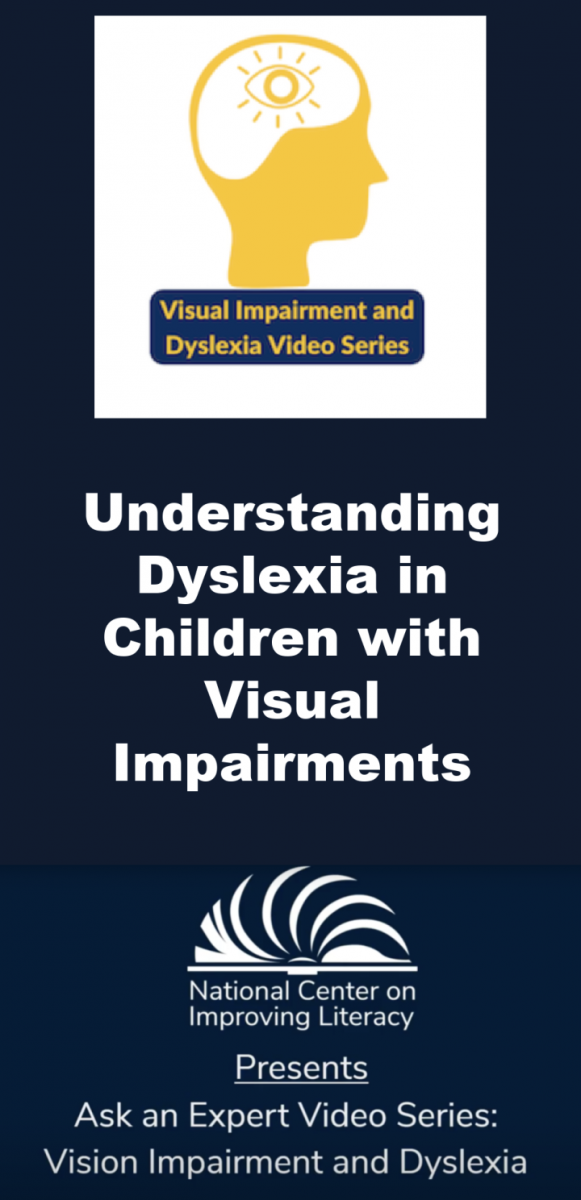
Posted here with permission from The National Center on Improving Literacy (NCIL).

